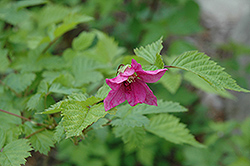Fri & Sat 8am - 8pm
Sun 8am - 7pm
Anytown, USA 12345
fax: 261.787.0463
e-mail: info@successgc.com


Plant Finder

Height: 6 feet
Spread: 6 feet
Sunlight:
![]()
![]()
Hardiness Zone: 4b
Description:
A shrubby mounded native plant that is a favorite with hummingbirds; large deep pink flowers give way to yellow-orange edible berries, but taste varies from sweet to very bitter; tolerates some light shade only
Ornamental Features
Salmonberry has fragrant hot pink flowers with white centers at the ends of the branches from late spring to early summer. It has bluish-green deciduous foliage. The crinkled pointy compound leaves turn yellow in fall.
Landscape Attributes
Salmonberry is a dense multi-stemmed deciduous shrub with an upright spreading habit of growth. Its relatively coarse texture can be used to stand it apart from other landscape plants with finer foliage.
This shrub will require occasional maintenance and upkeep, and is best pruned in late winter once the threat of extreme cold has passed. It is a good choice for attracting birds and hummingbirds to your yard. Gardeners should be aware of the following characteristic(s) that may warrant special consideration;
- Suckering
Salmonberry is recommended for the following landscape applications;
- Mass Planting
- Hedges/Screening
- General Garden Use
Planting & Growing
Salmonberry will grow to be about 6 feet tall at maturity, with a spread of 6 feet. It tends to be a little leggy, with a typical clearance of 2 feet from the ground, and is suitable for planting under power lines. It grows at a fast rate, and under ideal conditions can be expected to live for approximately 20 years.
This shrub does best in full sun to partial shade. It prefers to grow in average to moist conditions, and shouldn't be allowed to dry out. It is not particular as to soil type or pH. It is somewhat tolerant of urban pollution. This species is native to parts of North America.
